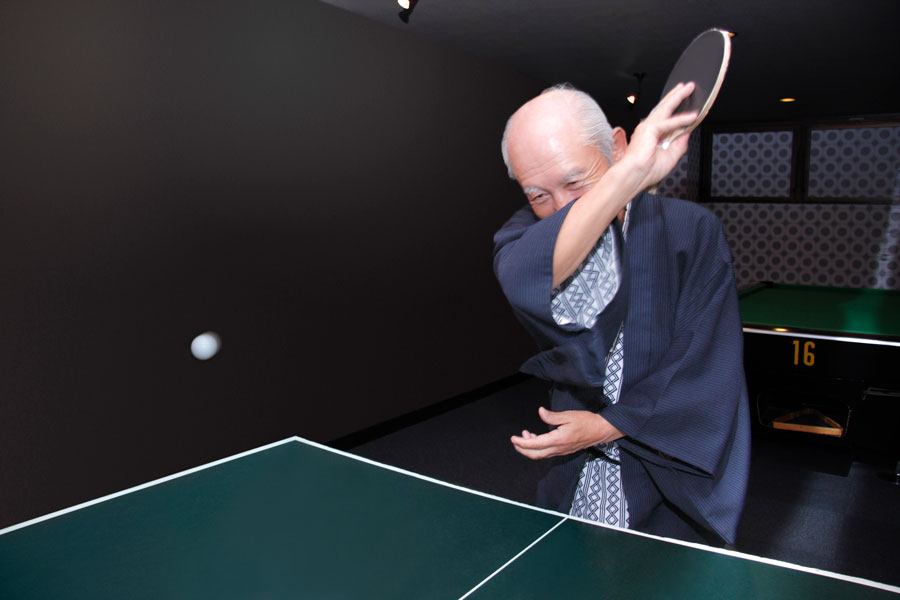Translational Research Informatics Center (TRI) hosted its first symposium aimed at the general public rather than researchers. The event attracted about 1,000 people, who came to Kobe Portopia Hotel on 7 October 2017 to listen to experts in various fields discuss how the latest advances in medical research are changing people’s lives.
The symposium’s theme, “Living an active life to 100”, might once have seemed like a fantasy, but it is getting closer to reality. The number of centenarians in Japan is now approaching 70,000 and many people continue working well into their eighties. Accordingly, this theme reflects a changing emphasis in medical research from just extending peoples’ lives to prolonging the time that they are healthy.
The time of the symposium was significant. This year is TRI’s 15th anniversary, and the research presented at the symposium represented highlights from its history.
Restoring hearing, speech and sight
The first symposium session featured three talks on the theme ‘Regenerating hearing, speaking, and sight.’ Shin-ichi Kanemaru of Kitano Hospital kicked off the session by describing a radical new way to treat perforated eardrums. He pointed out that the eardrum is a regenerative organ and that most injuries to it will heal naturally. But if a perforation is too big or the eardrum structure is unusual, the environment is not conducive and the perforation will not heal, resulting in hearing loss that requires a major operation.
Counter-intuitively, the treatment he has helped develop makes a bigger hole in the eardrum, which spurs the proliferation of new cells. To help these cells grow, a gelatin sponge containing a growth factor is applied to cover the hole. Kanemaru described the method as a dream treatment since it is straightforward to administer, requiring only 10 to 20 minutes, and recovery takes about 3 weeks. 86 per cent of patients obtained complete closure of their perforations.
Next, Tetsuji Sanuki from Kumamoto University reported a new treatment for spasmodic dysphonia — a disorder in which the muscles controlling the vocal cords have periods of spasm, resulting in a strained and strangled voice. Until now, the disease has been quite resistant to therapy. The new therapy involves applying titanium bridges that aim at a slight lateralization of the vocal cords by expansion of the thyroid cartilage anteriorly to prevent the spasmodic tight glottal closure at the terminal stage of phonation. Sanuki noted that clinical trials of the treatment have been successful and that the voice symptoms of many patients have improved. His team is hoping to obtain registration for the technique next year.
In the final talk of the session, Chie Sotozono of Kyoto Prefectural University of Medicine described a new way to improve sight when an opaque layer forms on the cornea due to chemical damage or disease. Her treatment involves cultivating cells taken from the mucosa in the patient’s mouth and then using an oral mucosal epithelial sheet, created using an amniotic membrane, to replace the opaque layer. This therapy, in conjunction with wearing limbal rigid hard contact lenses, has been used to improve patients' sight. Sotozono presented photographs of patients’ eyes that clearly showed the great improvement the treatment can bring.
Out of bed, into life

TRI's public symposium, 'Living an active life to 100', highlighted new therapies that will prolong quality of life.
© DAJ/Getty
The second session was entitled ‘Towards a bedridden-free society’ and featured three stem-cell treatments that aim to get patients out of their beds and empower them to live active lives. Masanori Sasaki from Sapporo Medical University started the session by talking about stem-cell therapy for stroke and spinal-cord-injury patients. Currently, such patients undergo long, arduous rehabilitation regimes for which progress can be painfully slow. But recovery can be fast-tracked by taking stem cells from the patient’s bone marrow, cultivating them, and then administer them back to the patient. There were gasps of wonder from the audience when Sasaki showed videos of the almost miraculous recovery of two patients who received the treatment.
TRI’s vice director, Atsuhiko Kawamoto, warned of a global crisis of peripheral artery disease, which if it progresses to its worst form, critical limb ischaemia (CLI), can lead to amputation and death. Currently, more than half of CLI patients die within five years of diagnosis. It is caused by the clogging of arteries in the limbs and can cause numbness, pain and ulcers. The stem-cell treatment involves harvesting peripheral blood stem cells mobilized from from the patient’s bone marrow, purifying them, and then injecting them into the affected area. Patients treated in clinical trials have been able to continue walking and have had ulcers healed.
Ryosuke Kuroda of Kobe University described stem-cell therapies for hard-to-heal bone fractures and cartilage injuries. In the case of bone fracture, the stem cells are harvested and purified from the patient’s blood using the same method as Kawamoto, described above. Kuroda showed X-ray photographs of fractures that had not responded to conventional treatment, but had healed after the stem-cell therapy.
Finally, TRI’s director, Masanori Fukushima, gave an impassioned address about the challenges facing an ageing society and the ways in which Japan is playing a leading role in addressing them. In addition, while pointing out the advances being made in medical science, he emphasized the three key underlying elements to a healthy lifestyle, namely a good diet, regular exercise, and sufficient sleep.
The symposium was a resounding success. The audience gained a greater appreciation of what medical science is capable of as well as the key role TRI is playing in pioneering new treatments.




